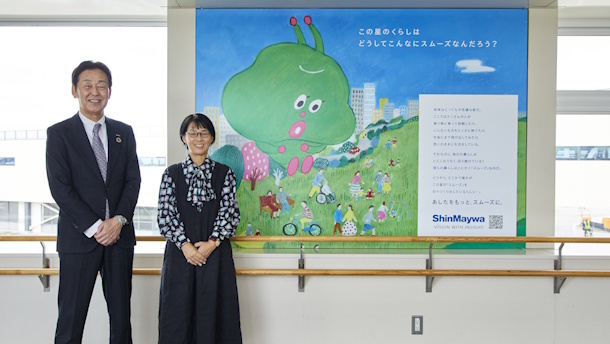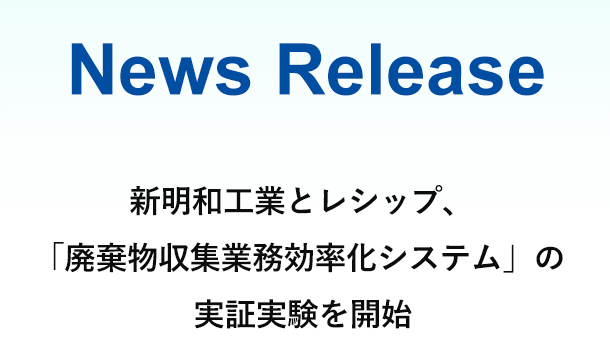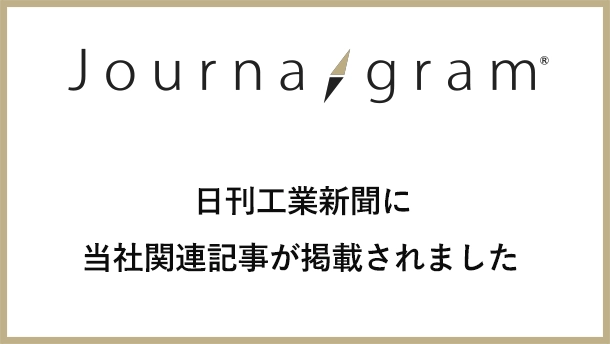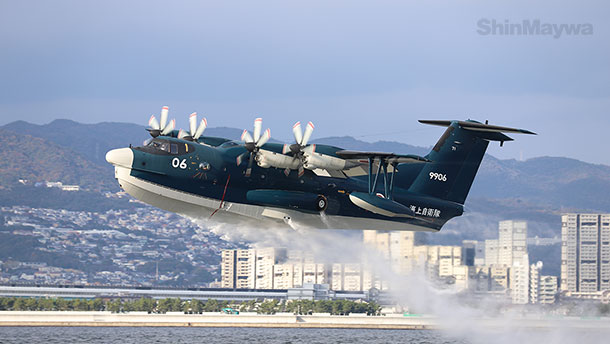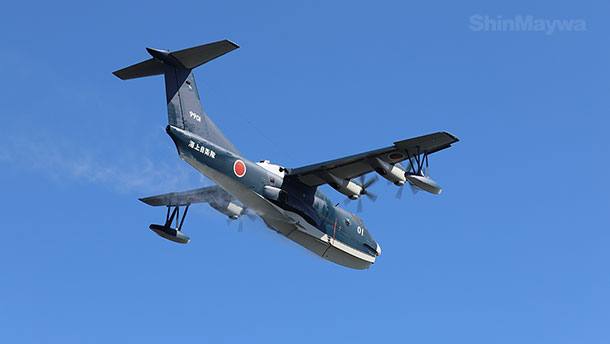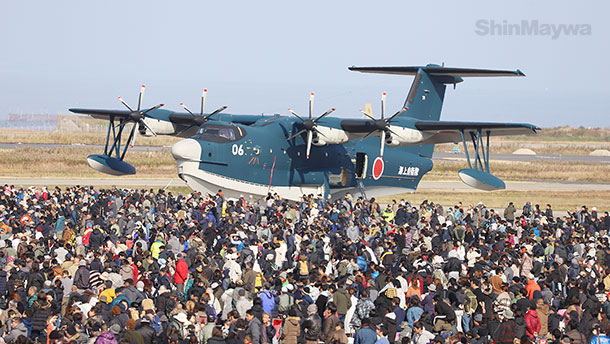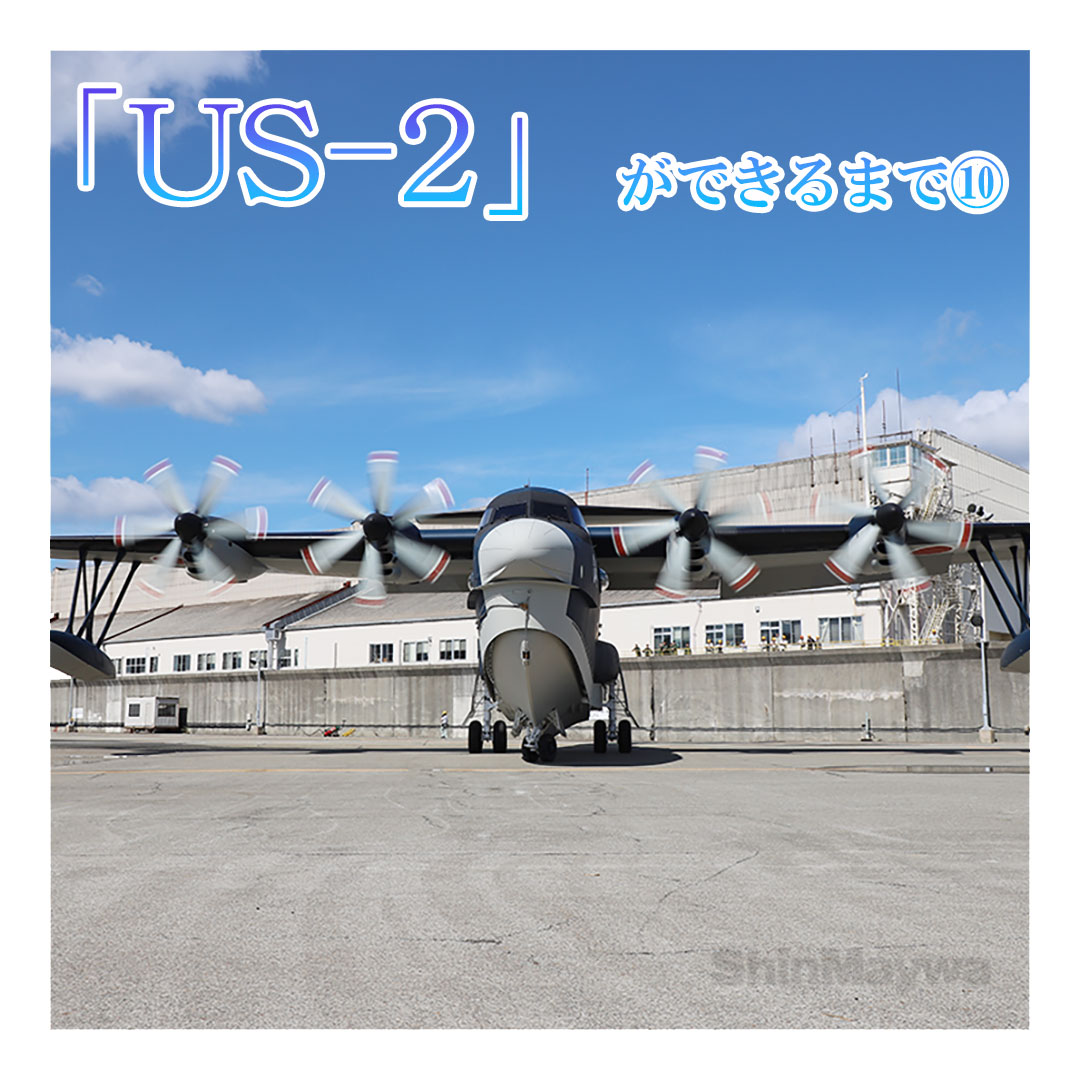
-プロのライターが密着取材!
黄色いプライマー塗装の機体が、いよいよ紺色に化粧されます!
機体の組立が終わり、バルジやフェアリングなど表面の艤装(ぎそう)を取り付けた「US-2」は、次に機体表面を一気にダークブルーの「洋上迷彩」に塗装します。この色は低空飛行中や海面に着水したときに空から見えにくいようにするものです。
甲南工場には、機体を組み立てるエリアに隣接して、機体全体がすっぽり収まる塗装ブースがあります。ここに「US-2」が入ると、作業しやすいよう足場が組まれ、外部からホコリが入り込まないようにスクリーンが下ろされます。
塗料が付着してはいけない部分はすっぽりとマスキングされ、作業員も塗料から身を守るために防護服と防塵・防毒マスクを着けて肌を一切露出しない格好で作業にあたります。夏場は非常に苛酷な環境になりますが、塗装にムラができないよう、複数の作業員が協力しながら塗り進めていきます。機体全体が洋上迷彩に包まれ、その塗料が乾いた後は、機体に入る文字や日の丸を重ね塗りします。
プライマーの黄色だった機体がダークブルーになって塗装ブースから出てくると、一気に「US-2」らしくなりますね。
※艤装(ぎそう)・・・エンジンや機体内外の装備品を取り付ける工程のこと、または取り付ける装備品そのもの。
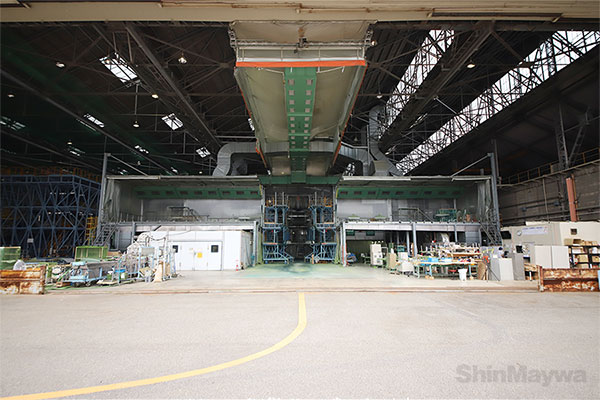 (1)「US-2」が1機丸ごと入る巨大な塗装ブースの全景です。
(1)「US-2」が1機丸ごと入る巨大な塗装ブースの全景です。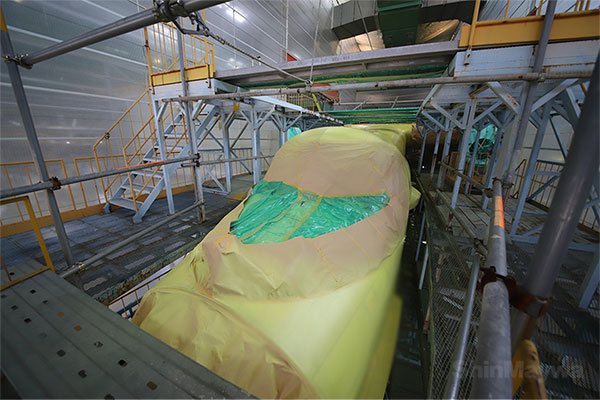 (2)塗装ブースに「US-2」が入ると、足場を設置し周囲にスクリーンを下ろし、塗装しない部分をマスキングします。
(2)塗装ブースに「US-2」が入ると、足場を設置し周囲にスクリーンを下ろし、塗装しない部分をマスキングします。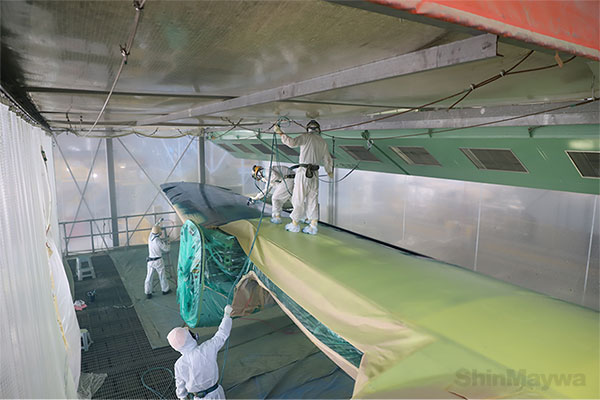 (3)スプレーで迷彩色を塗っていきます。塗料の流れるホースが塗装面に触れないよう、複数の作業員が協力しています。
(3)スプレーで迷彩色を塗っていきます。塗料の流れるホースが塗装面に触れないよう、複数の作業員が協力しています。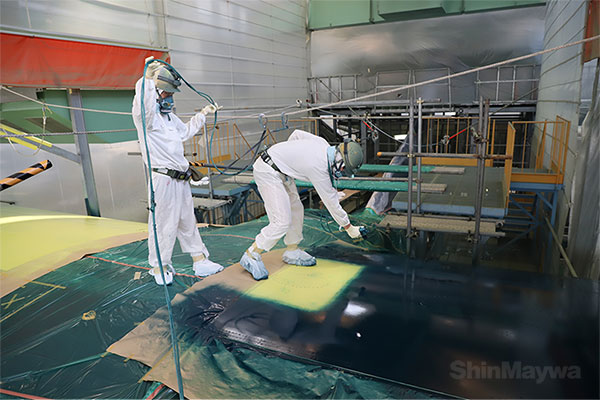 (4)塗膜の厚さを均一にするため、機械のように一定のリズムで腕を動かし、後ずさりしながら作業します。
(4)塗膜の厚さを均一にするため、機械のように一定のリズムで腕を動かし、後ずさりしながら作業します。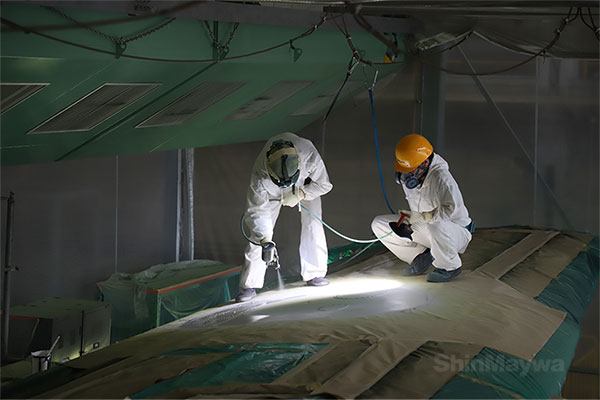 (5)主翼上面の「日の丸」。赤丸を塗り、その部分をマスキングして縁取りの白を塗っています。
(5)主翼上面の「日の丸」。赤丸を塗り、その部分をマスキングして縁取りの白を塗っています。
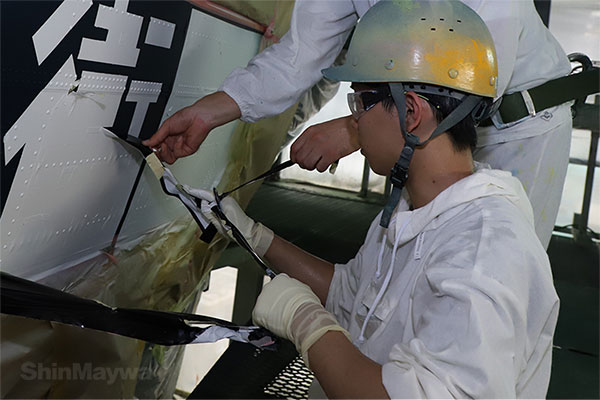 (6)機体色の文字を重ね塗りした部分のマスキングテープを剝がします。塗料は乾いているので、息苦しいマスクも不要です。
(6)機体色の文字を重ね塗りした部分のマスキングテープを剝がします。塗料は乾いているので、息苦しいマスクも不要です。
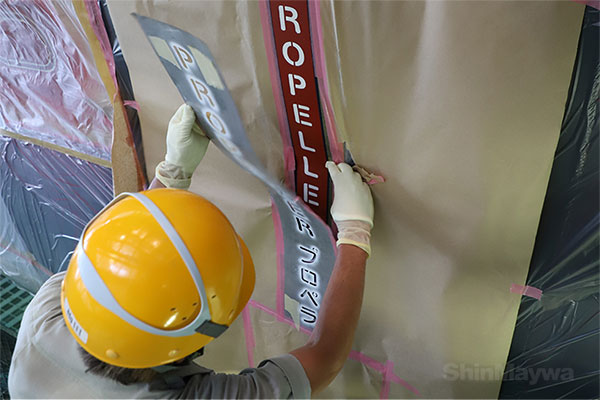 (7)胴体側面のプロペラ位置を示す注意表示を塗り終わり、ステンシルシート(文字や模様を切り抜いた型紙)を剥がしています。
(7)胴体側面のプロペラ位置を示す注意表示を塗り終わり、ステンシルシート(文字や模様を切り抜いた型紙)を剥がしています。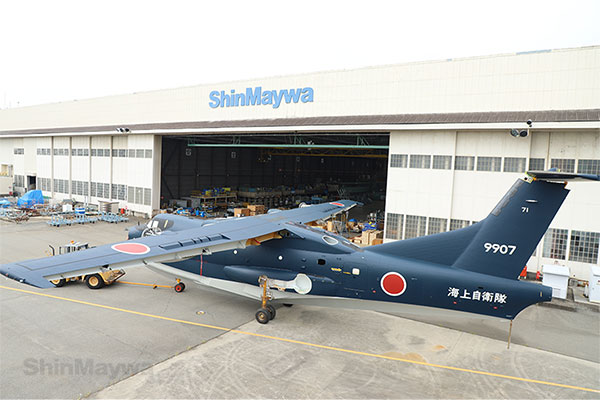 (8)塗装の終わった「US-2」が塗装ブースから引き出されました。
(8)塗装の終わった「US-2」が塗装ブースから引き出されました。
ライター 板倉秀典
- ※本連載の著作権等は新明和工業株式会社に帰属します。当社の許可なく内容や画像およびその一部を他の目的で転用することはご遠慮ください。
テーマから探す
#社会インフラを支えています
#サステナビリティ
#パーキングシステム
#輸送
#3つの領域
#環境
#都市
#新明和グループ
#流体
#AI
#アップサイクル
#保守
#研究開発
#川西航空機
#川西機械製作所
#新規事業
#水素
#採用
#産機システム
#特装車
#航空機
#機械式駐車設備
#US-2
#真空装置
#航空旅客搭乗橋
#自動電線処理機
#環境システム
#DDモータ
#民間航空機事業
#塵芥車
#テールゲートリフタ
#飛行艇
#ダンプトラック
#リサイクルセンター
#水中ミキサ
#アームロール®
#脱着ボデートラック
#ごみ中継施設
#水中ポンプ
#XU-L
#XU-M
#甲南工場
#XU-S
#製品紹介
#エレパーク®
#ループパーク®
#US-1A改
#パックスウェイ®
#佐野工場
#US-1
#PS-1
#UF-XS
#US-2ができるまで
#マンガ暮らしを支える新明和
#お知らせ
#真空成膜のお話
#歴史
#イベント

